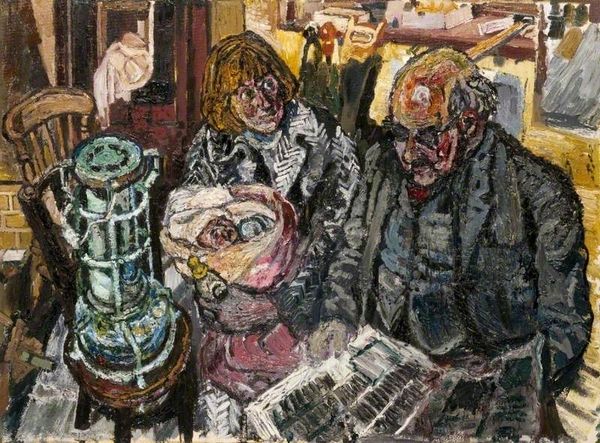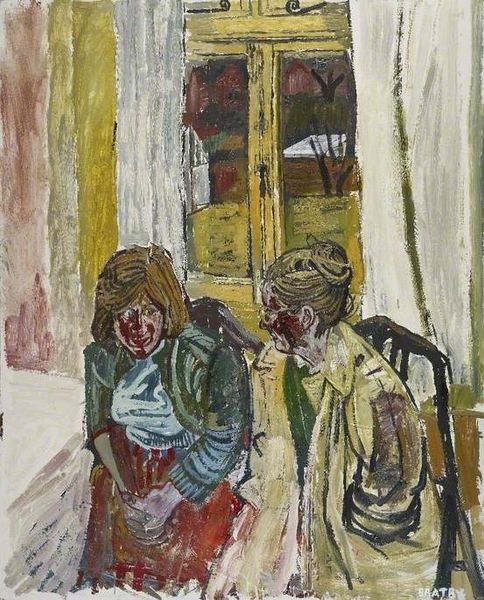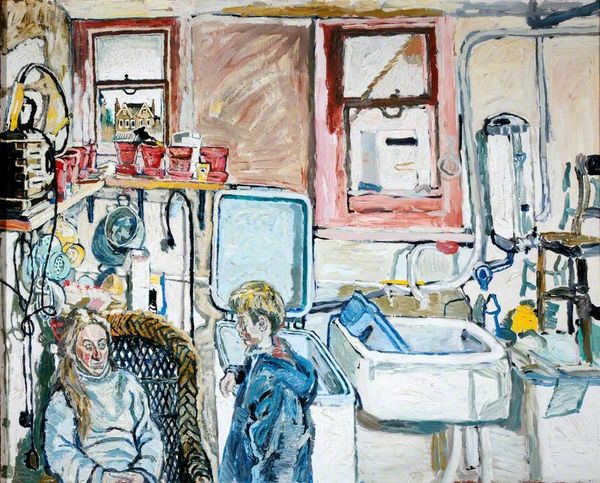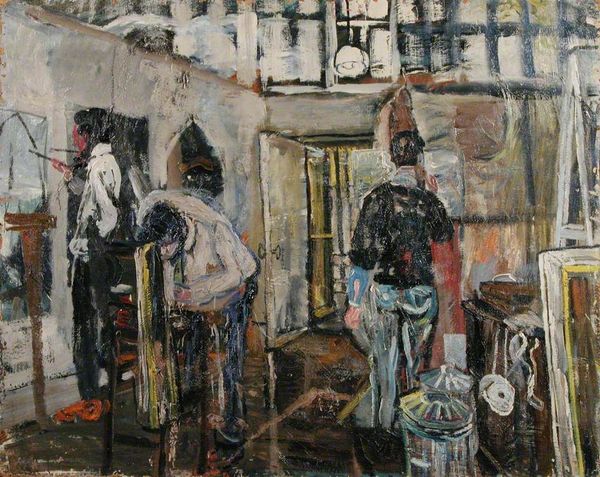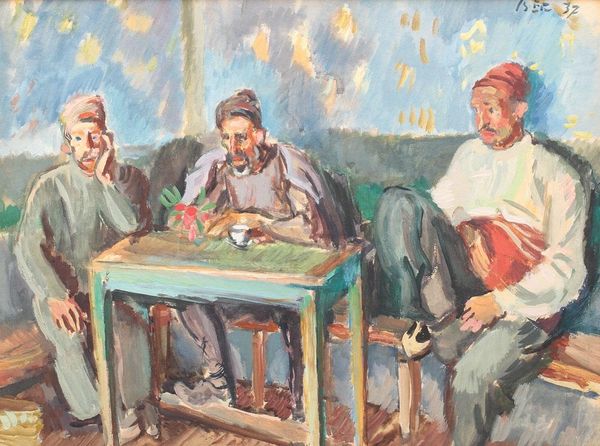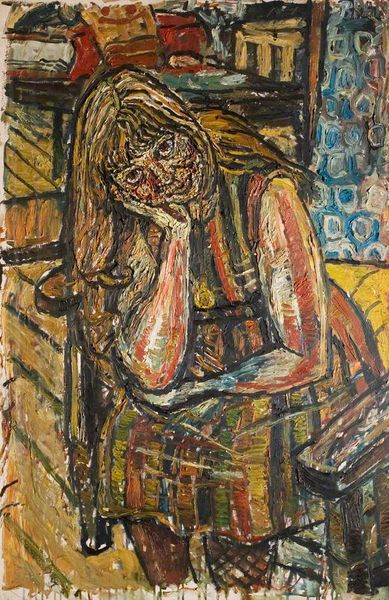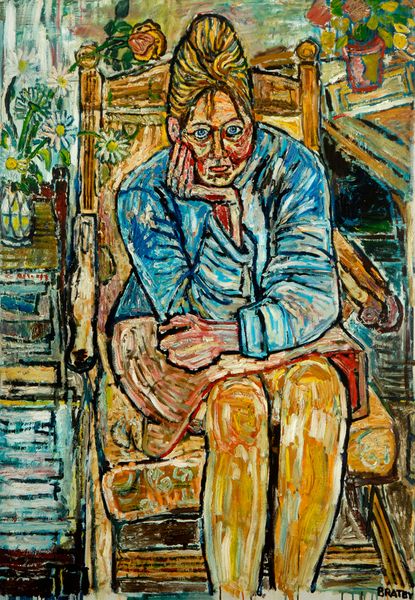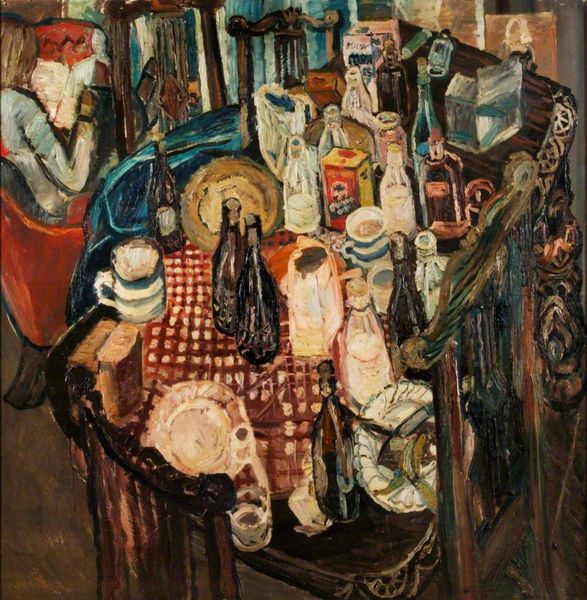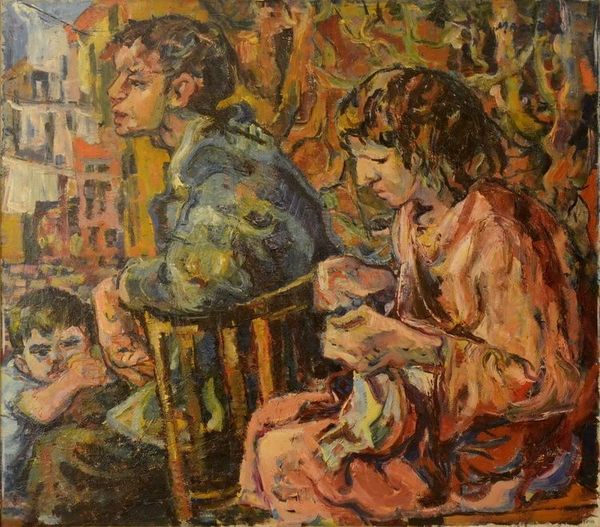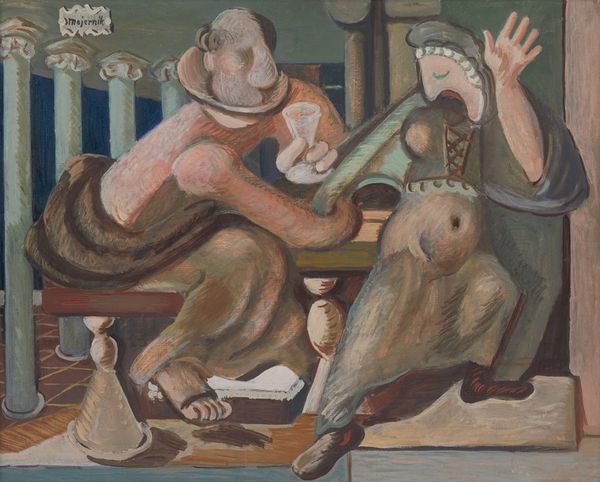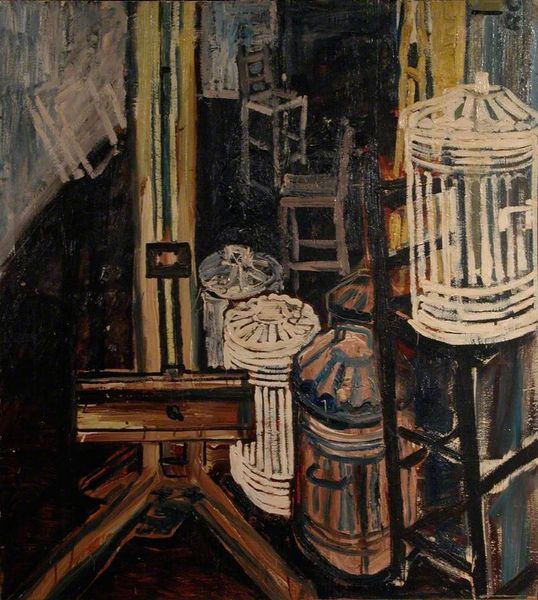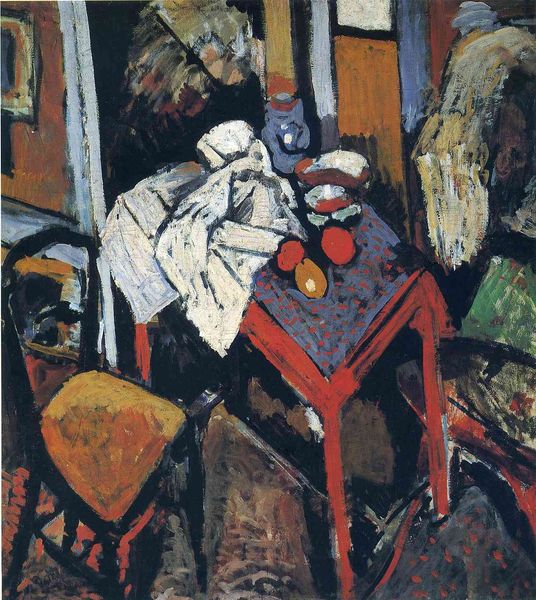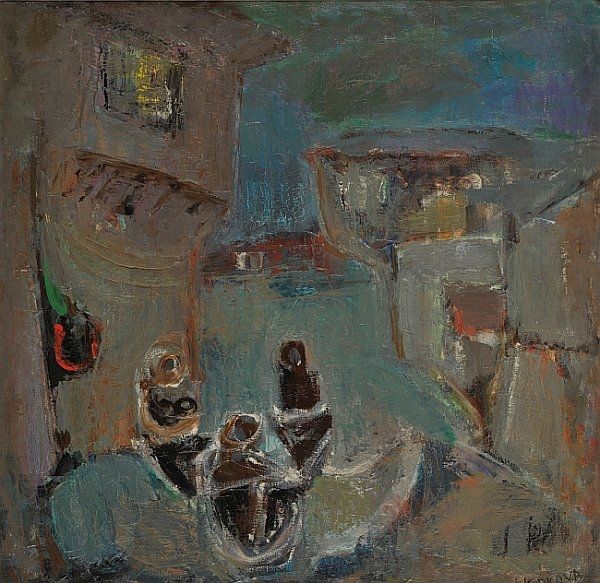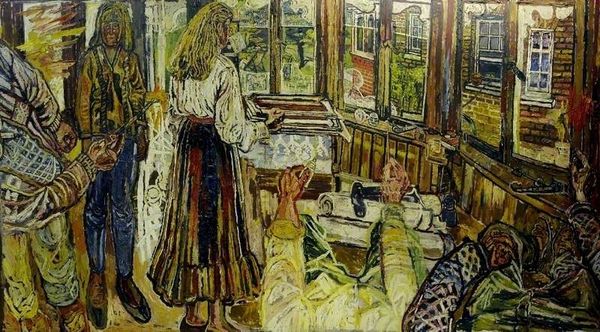
painting, oil-paint
#
portrait
#
kitchen-sink-painters
#
painting
#
oil-paint
#
oil painting
#
group-portraits
#
genre-painting
#
realism
Copyright: John Bratby,Fair Use
Curator: Looking at John Bratby’s 1955 painting, "Three People at a Table," what are your immediate thoughts? Editor: Cluttered, almost claustrophobic. The thick impasto creates a sense of immediacy, but also unease. There’s a weight to the materiality here; the oil paint feels almost sculptural. Curator: Bratby, you know, was a key figure in the Kitchen Sink School, depicting everyday domestic scenes. It's an aesthetic and a political choice. It’s not about romanticizing the working class; it’s about showing life as it is. Editor: Right. Look at the bottles, the newspapers, the mugs on that overcrowded table. These aren't carefully curated objects. They speak to the relentless accumulation of stuff in working-class households. I am wondering about what the labour invested in the making of such an artwork is telling us too... Curator: It challenges notions of what is considered "proper" subject matter for art. He deliberately avoids idealization, almost to a confrontational degree. The Kitchen Sink movement emerged in a post-war Britain dealing with rationing, poverty, and profound social changes. Editor: And the painting's texture mirrors this. The thick paint becomes a metaphor for the grit and grime of daily life. Each brushstroke is a physical record of Bratby's interaction with the material. It shows labor! Curator: These artists were critiquing the establishment, forcing the art world to confront realities it preferred to ignore. They asked fundamental questions about the social role of art. Editor: Questions that resonate even now. Consider what "realism" means when mediated through layers of paint, brushstrokes, and the artist's subjective interpretation. It becomes clear: materials always talk! Curator: Exactly. It’s not just about what's depicted but also about how it’s depicted. This painting offers an insight into a very specific socio-historical context. It also makes a powerful claim for art's role as social commentary. Editor: A compelling artwork!
Comments
No comments
Be the first to comment and join the conversation on the ultimate creative platform.
